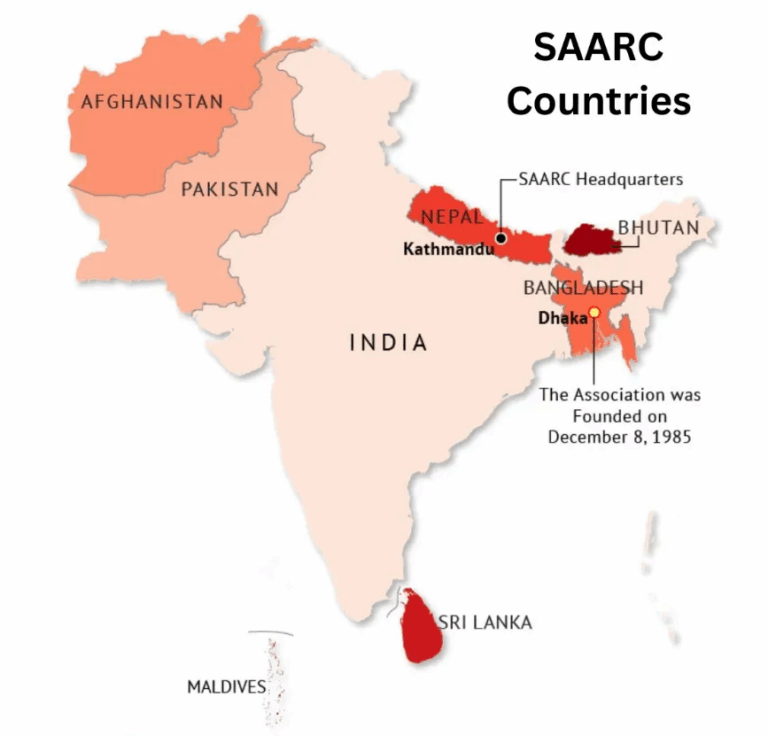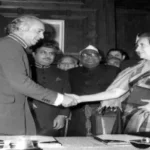50 Years of National Emergency (1975 – 2025)
Why in the News?
- June 25, 2025, marks the 50th anniversary of the National Emergency imposed in 1975 by then Prime Minister Indira Gandhi under Article 352 of the Indian Constitution.

Background
National Emergency is governed by Article 352 of the Constitution:
It allows the President to declare an Emergency if the security of India or any part thereof is threatened by:
- War
- External Aggression
- Armed Rebellion (replaced “internal disturbance” via 44th Amendment, 1978)
Constitutional Evolution:
- 38th Amendment Act, 1975:
Made the President’s satisfaction final and beyond judicial review. - 44th Amendment Act, 1978:
Replaced “internal disturbance” with “armed rebellion”.
Restored judicial review of the Emergency Proclamation.
Historical Instances:
- 1962–68: Indo-China War (external aggression)
- 1971–77: Indo-Pak war; later extended citing “internal disturbance”
- 1975–77: Declared due to internal disturbance – widely condemned as authoritarian misuse.
Features
Process of Proclamation:
- It must be based on a written recommendation of the Union Cabinet.
- Can be anticipatory, i.e., before actual war/aggression.
- Needs Parliamentary approval within 1 month by:
- Special majority in both Houses.
- Valid for 6 months, extendable indefinitely with fresh approvals.
Territorial Scope:
- Originally nationwide.
- 42nd Amendment allowed regional Emergency in part(s) of India.
Effect on Fundamental Rights:
- Article 358:
- Automatic suspension of Article 19, but only in case of war or external aggression.
- Article 359:
- The President can suspend court enforcement of any rights (except Articles 20 and 21).
Effect on Legislature and Centre-State Relations:
- Parliament can legislate on State List subjects.
- The President can issue ordinances affecting state powers.
- Lok Sabha’s term can be extended by 1 year at a time, during an Emergency.
Judicial Oversight:
- Initially barred (38th Amendment).
- Restored by the 44th Amendment.
- Minerva Mills Case (1980): SC held that an Emergency can be reviewed and struck down if mala fide or irrational.
Challenges
Threat to Fundamental Rights and Liberties:
- The 1975 Emergency led to widespread censorship, mass arrests, and suspension of civil liberties.
Democratic Backsliding:
- The use of Emergency for political consolidation, not an actual national threat, set a dangerous precedent.
Lack of Institutional Checks:
- Judiciary, media, and Parliament were subdued or bypassed, weakening democratic safeguards.
Centralisation of Power:
- Emergency provisions lead to unitary tilt, undermining federal balance.
Ambiguity in Trigger Conditions:
- Despite the 44th Amendment, terms like “armed rebellion” can still be interpreted expansively.
Public Memory and Political Literacy:
- Awareness of constitutional provisions and past misuse is declining, increasing the risk of future misuse.
Way Forward
Strengthen Constitutional Safeguards:
- Strict parliamentary and judicial scrutiny of Emergency proclamations.
- Mandatory judicial review within a fixed time after proclamation.
Promote Democratic Literacy:
- Include detailed Emergency case studies in school and university curricula.
- Media literacy campaigns to sensitise citizens to executive overreach.
Institutional Independence: - Ensure the judiciary, media, and civil services retain functional autonomy even during emergencies.
Digital and Legal Reforms:
- Prevent misuse of digital surveillance and media restrictions in the name of Emergency powers.
- Parliamentary Oversight:
- Strengthen mechanisms like:
1/10th Lok Sabha rule to force a session.
Mandatory debates before approval or extension of the Emergency.
- Introspective Commemorations:
- Use the 50th anniversary to initiate nationwide reflections on the limits of state power, citizens’ rights, and the need for vigilance in democracy.
Conclusion
The 1975 National Emergency stands as a cautionary tale about how even a democratic Constitution can be misused in the absence of institutional checks and active civic participation. As India marks the 50th anniversary, it is not just a time to look back but to institutionalise safeguards, educate future generations, and ensure that the spirit of the Constitution is never again undermined in the name of national security.
FAQ: The 50 Years of 1975 Emergency in India
1. Why is the 1975 Emergency significant in Indian constitutional history?
It marked a drastic curtailment of civil liberties and centralisation of power, exposing vulnerabilities in India’s democratic framework. It remains a cautionary episode of executive overreach under constitutional cover.
2. Under which Article was the National Emergency declared in 1975?
It was declared under Article 352 of the Constitution, citing “internal disturbance”, a term later replaced with “armed rebellion” via the 44th Amendment Act, 1978.
3. How many times has India declared a National Emergency?
India has declared National Emergency three times:
- 1962-1968: Indo-China War (external aggression)
- 1971-1977: Indo-Pak War (external aggression, extended later)
- 1975-1977: Citing internal disturbance (widely criticised)
MAINS PRACTICE QUESTION
Question: Critically examine the constitutional, political, and societal implications of the 1975 National Emergency in India. How has the event shaped democratic safeguards and public consciousness in the country over the last 50 years?
PRELIMS PRACTICE QUESTION
Q. Consider the following statements regarding Articles 358 and 359:
- Article 358 applies only in the case of war or external aggression.
- Article 359 allows suspension of Articles 20 and 21 during an Emergency.
Which of the above is/are correct?







